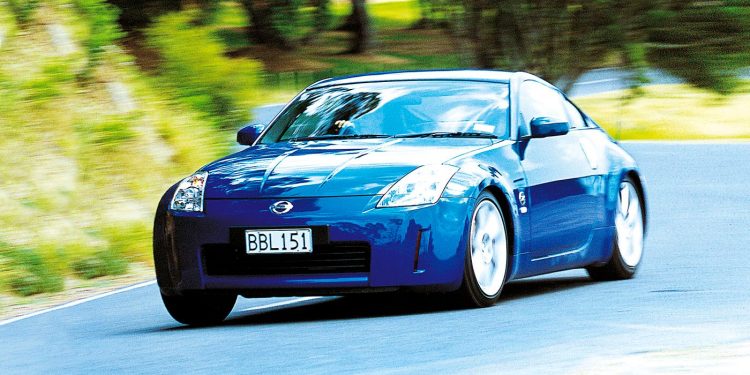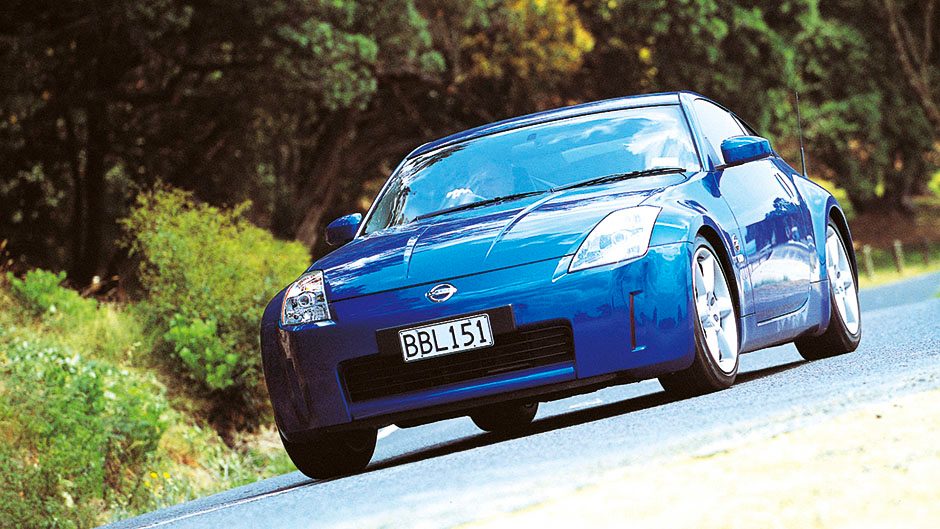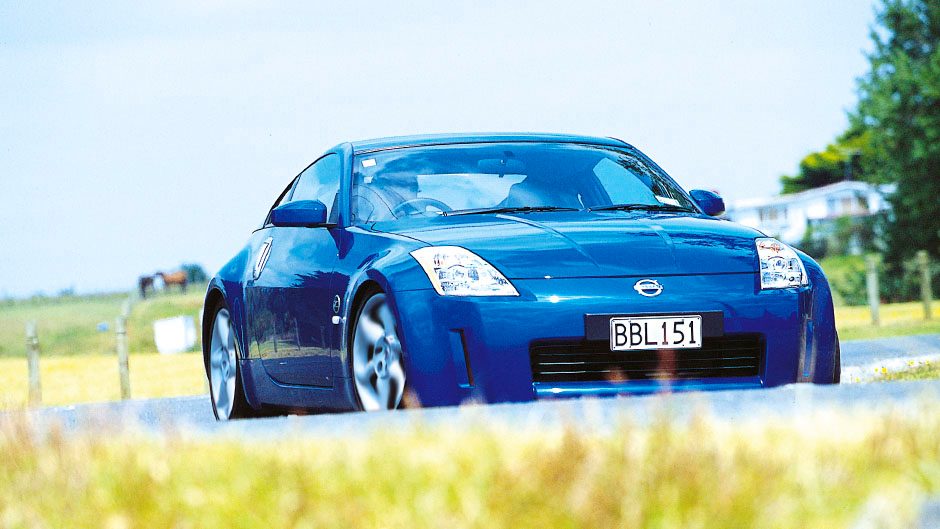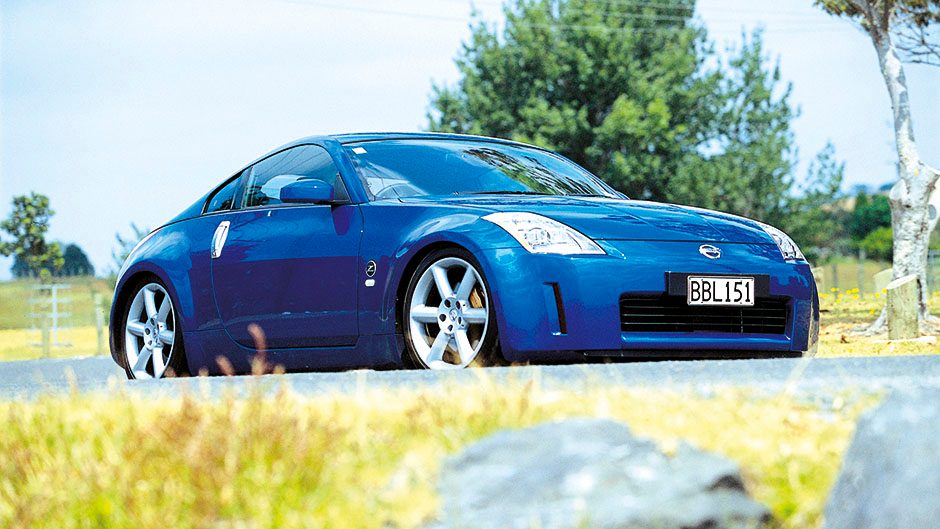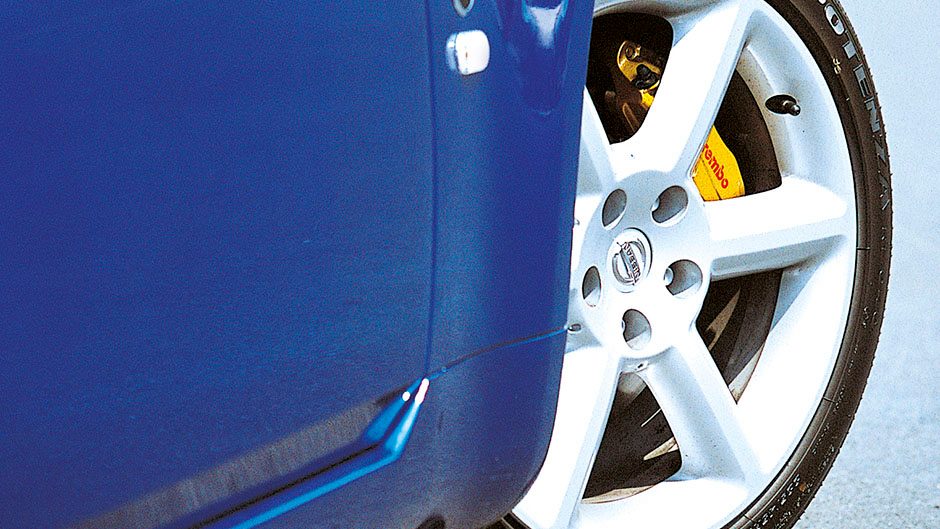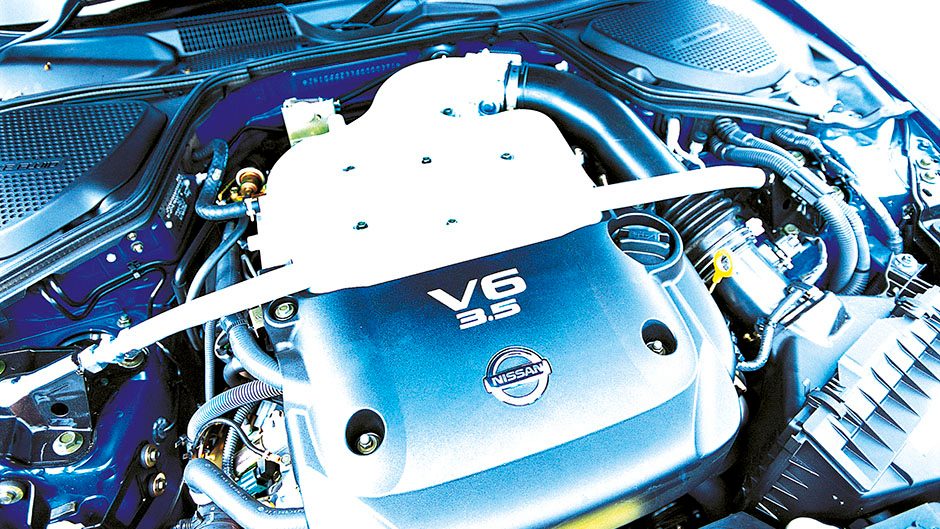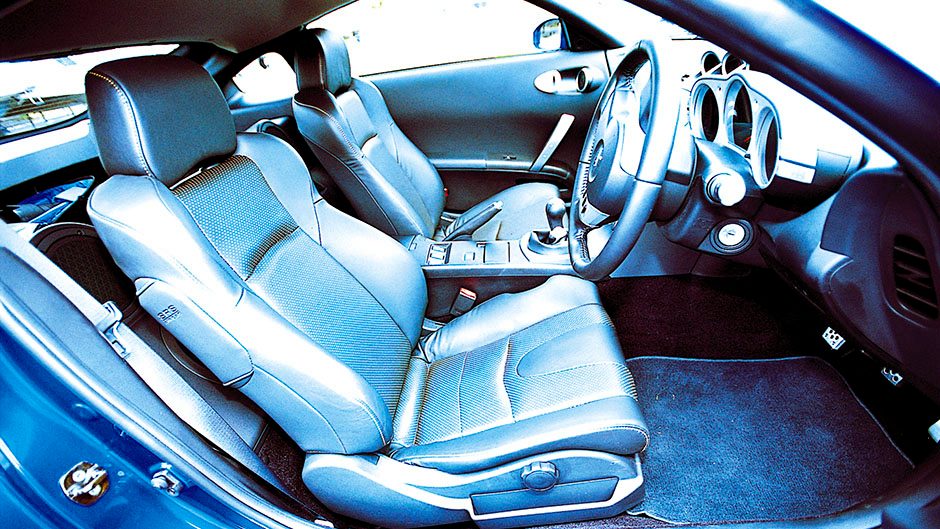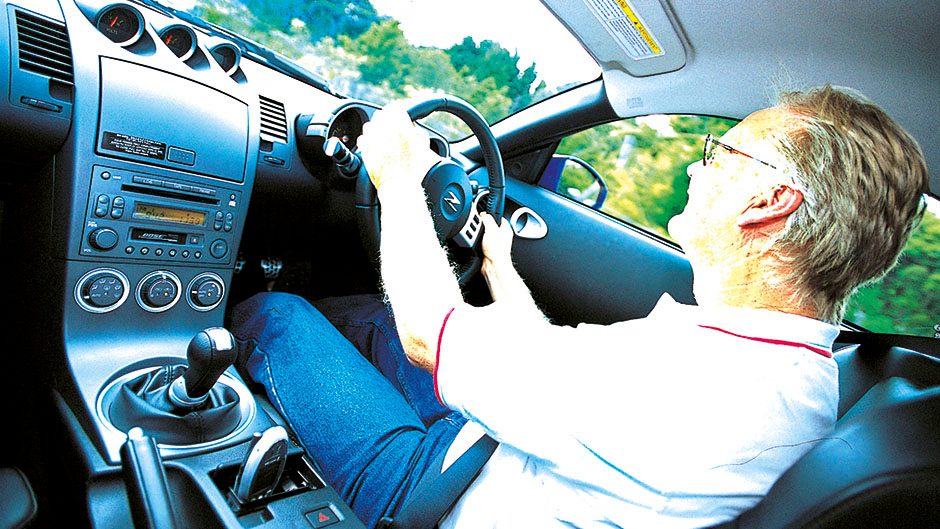2003 Nissan 350Z review
Words Paul Owen | Photos Adrian Payne
Nissan’s 350z sports-coupé has finally arrived on New Zealand roads. So let the in-office fighting for the keys to the spiritual successor of the 240Z and 300ZX begin!
It’s not all free lunches and fast cars when you work for a car mag: there’s all that PMT to deal with. Pre-Magazine Tension, that is – the long nights and early mornings required to meet the monthly deadline, the booked test cars that don’t turn up on time, and, just when writer’s block couldn’t get any worse, the constant phone calls from industry lieutenants and PR merchants. However, every so often a car comes your way that makes it all worthwhile, a car that is an absolute privilege to be the first reviewer in the country to drive. The key suddenly lands on your desk to a driving experience that blows all the automotive overload and residual cynicism away.
This month, that key – somewhat surprisingly – bore the Nissan brand. Enter the 350Z, the new Zen Master of sports-coupés. Zen is a form of Buddhism that seeks enlightenment through the exclusion of left-brain logic in favour of meditating on one’s essential nature. It’s a practice that Nissan seems to indulge in during times of financial health; times when the corporation can most afford to be creative. For the engineering-driven N-brand tends to spit out a world-shaking sports-coupé just when the shareholders are happiest, the balance sheet is safely back in the black, and the bean-counters have relaxed their white-knuckle grip on the corporate purse-strings.
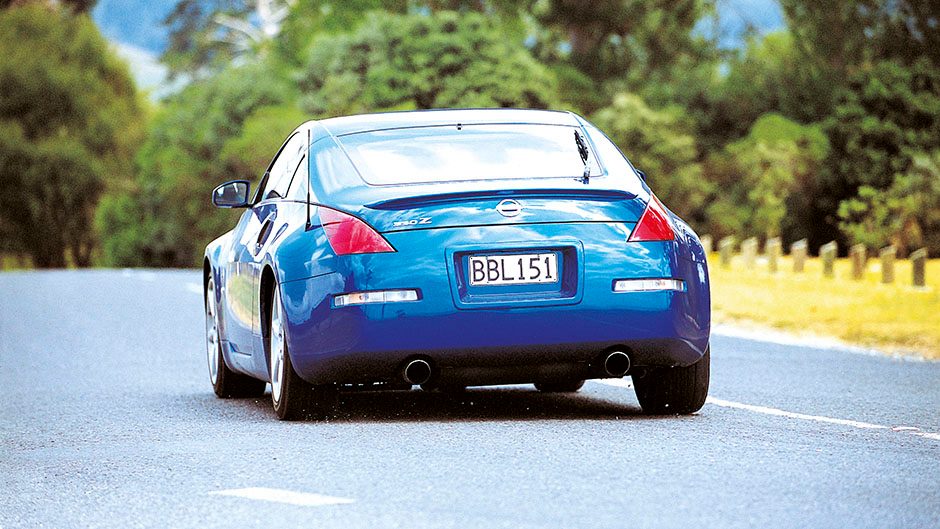
It happened first in 1970 with the birth of the original 240Z, a car that made the similarly priced MGB-GT look like the tired old Morrie-in-drag it was. Then, 20 years later, history repeated with the debut of the 300ZX: a twin-turbo variable-valve-timed V6-powered 2+2 coupé that could put the fear of Nissan into Porsche-philes (especially if they drove a 928). It’s from these two Zed-cars that the new 350 takes its inspiration. You’ll find the Z-design DNA in the rectangular grille that recalls the 240, and a curvaceous C-pillar that instantly evokes memories of the 300ZX. Yet the 350Z isn’t an overtly retro design, but the start of something new.
We’ll leave the designers to talk about the Nissan’s new form language, and get on with the driving. Put simply, the car goes as good as it looks, and it looks hotter than any new coupé of recent memory. Yet there’s an element of surprise and delight when you ask the hardest questions about the dynamic ability of the 350Z while at the wheel – and get answers usually associated with far more expensive cars from Germany or Italy. Want to save $160,000 on the cost of a Porsche 911 or Maserati 4200GT? Apart from a minor difference in top-end zip, the Nissan delivers the same sense of occasion, and a driving experience that’s at least comparable, if not superior, due to a refreshing lack of quirks.
Yet these comments fly in the face of convention. Unlike previous Zeds, the 350 isn’t a stand-alone sports car. It shares much with a bunch of ordinary family sedans, albeit sedans so good Nissan wants to keep them purely either for Japanese consumption, or, wearing the Infiniti badge, as competitors for Lexus in the USA. The four-door Skyline 300GT and Skyline 350GT-8 rate as Japan’s half-price alternatives to a BMW 5 Series or E-class Mercedes, share the same FR-L platform as the 350Z, and come powered by similar derivatives of the heavily revised third-generation VQ-family of V6 engines. Yet driving the 350Z is an extreme sport experience, and one so pure that it sternly refutes the lore that a cutting-edge sportster can’t be created from a family sedan basis.
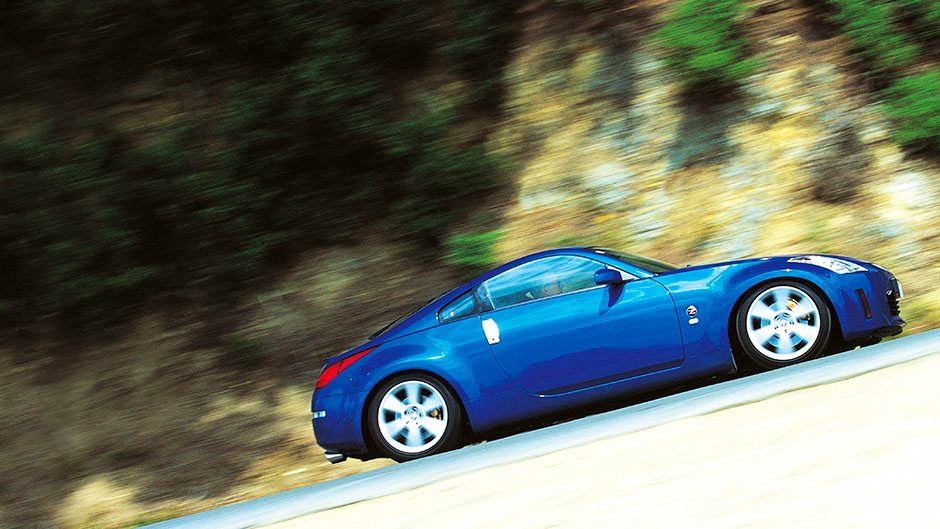
The second myth the 350Z busts wide open is that a normally aspirated 3.5 litre V6 engine can’t develop more than 200 kW of peak power while still retaining a measure of drivability. Mercedes has to resort to supercharging to get more than 200,000 watts out of its 3.2 litre V6, and while BMW’s 3.2 litre six for the M3 develops a claimed 252 kW, much of that peak power results from the induction and exhaust flow advantages of the chosen straight-six format.
Like the M3, the 350Z has trigger-like response to a prod of the go-pedal. The lunge forward arrives so instantly it’s as though the wiring of the electronic throttle is an extension of driver’s nervous system. There’s zero syntax delay as the 206 kW V6 slings the car forward with enough gusto to encourage predictions of a 0-100 km/h time in 6.0-second territory. In terms of performance in a straight line, the 350Z feels as strong as an Impreza STi, only with one key difference: there’s no turbo-lag. Instead, there’s plenty of twist for the carbon-fibre driveshaft that feeds power to the rear wheels at all points of the tachometer needle. Continuously variable timing for the opening and closing of the inlet valves ensures the V6 draws a wide and high plateau of torque on the dyno graph. The peak of 363 Nm arrives at 4800 rpm (M3: 365 Nm at 4900 rpm), yet it feels like there’s always at least 300 Nm available to the driver, despite the rev-happy ‘oversquare’ cylinder bore and piston stroke dimensions (95.5 mm x 81.4 mm).
This bodes well for the less expensive five-speed auto-equipped ‘Touring’ version of the 350Z, for that always accessible dollop of grunt will keep the torque converter right on the case. However, there are more reasons to spend another $3000 on the $67,990 six-speed manual ‘Track’ version than just the beefed-up Brembo brakes, 18” alloys, Vehicle Dynamic Control system, and the fatter tyres it wears. For opting for just two drilled alloy pedals to dance with, instead of three, means missing out on one of the Z’s best attributes: a gearshift made in sports-car heaven.
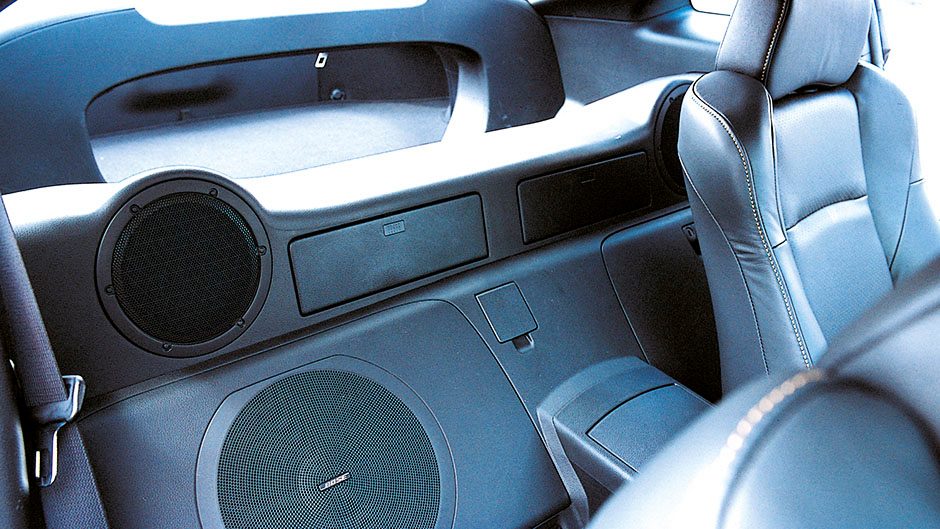
Take things slowly with the six-speed manual and the first impressions are it’s slightly more notchy in action than Honda’s excellent six-speeder in the S2000. However, the more rushed the change, the more the Nissan box likes it. Slam the stubby, leather-clad lever hard through the short throws of a tight – yet easy to negotiate – gate, and the reward will be a seamless change of ratio in a nanosecond. Gear shifting (or slamming) is at the driver’s discretion in the 350Z. Thanks to the phat power delivery of the engine, getting the best out of it doesn’t require close consideration of ratio choice as in, for example, an S2000. It’ll easily tolerate a third-to-sixth upshift, and still sound and feel totally unruffled by such a lazy driving style. It quickly becomes obvious that there are no high-lift camshafts or laggy turbos lurking under the bonnet.
Instead the 350Z relies on careful attention to optimal cylinder charging over a wide range of engine speeds as the source of its powerful surge. Equal-length headers flow into a large-diameter single pipe, and then split once more into two mufflers in Nissan’s freest-flowing exhaust system. On the other side of the combustion process, clever intake manifold design permits a straight shot at the inlet ports for the fuel mixture, and the front-mounted large-capacity airbox looks designed to achieve a degree of passive ram-air supercharging. Yet, it’s quickly obvious that peak power and torque weren’t so much of a priority as drivability and aural appeal. In the stretched, four-seat Infiniti G35 version sold in the US, the same motor develops 214 kW of peak power and 371 Nm of torque, an indication that there’s more to come from Japan’s most powerful atmo-V6 so far.
If there’s a better-sounding V6 around, I’ve yet to come across it, although some in the NZ Autocar office like the traditional, higher-pitched warble of the Golf R32 better. Me, I’ll take the more guttural and less vocal growling of the Nissan every time, for it reminds me of a Maserati 3200GT V8 with more socially acceptable mufflers.
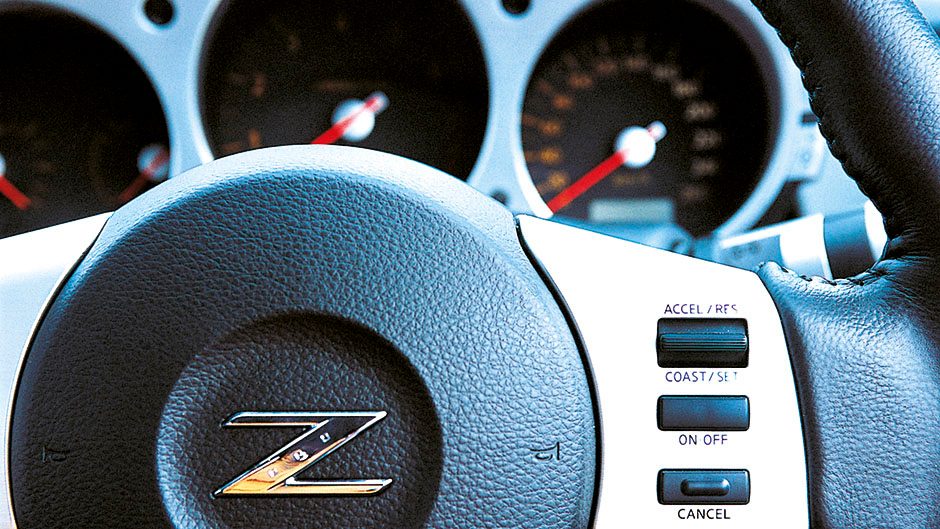
The Maserati comparisons continue when the road starts to twist and turn like John Kirwan’s famous try-scoring burst past the entire Italian rugby team in the first World Cup. If anything, the Nissan’s an even better drive than the ‘poor’ person’s Maranello machine, possessing a more rapid rate of turn-in, and higher levels of feedback. For just as the engine feels plugged into the driver’s nerves and emotions, the chassis achieves a similar level of symbiosis. Few cars are as communicative as this one, either through the wheel or the seat of the pants. Through the former comes messages of the distress from the front tyres as you chuck the 350Z in hard; through the latter the Nissan gives plenty of early warning for the need for opposite lock once you apply the remedial application of throttle for understeer. With the slightly intrusive VDC system given an afternoon’s leave, a quick flick of the wheel in the opposite direction of the corner is all that’s needed to catch the tail in a Track model, yet there’s also the impression that the car helps to quell the oversteer as well. Which it did, we found upon further investigation, via a viscous limited-slip rear diff similar to that of the M3. When the inside rear wheel lights up exiting a bend, the rear diff quickly transmits all the torque to the outside wheel carrying the weight of the car, allowing it to hook up and drive better than a mechanical diff.
The 350Z is the sort of car that’ll make anyone feel like a driving god, simply because the chassis responses are so predictable once you take that leap of faith and turn the Track’s VDC system off. Both the Track and Touring versions share the same, firm-riding suspension, and the difference between the two is defined by the higher cornering speeds and responses of the former (via its lower profile, and wider tyres) and the manual’s absolutely amazing brakes. Not only do the multi-piston calipers of the Track version become gold-painted Brembos, but the vented discs have also grown in diameter to a fulsome 324 mm up front and 322 mm at the rear (up 30 mm at both ends over the Touring, although both are equipped with ABS, Brake Assist and EBD aids). The result is a car that may set new active safety standards when it comes to stopping from 100 km/h. However, we’ll have to wait to explore the braking performance fully in a future issue, for Nissan NZ was quite firm in its instructions that no performance data should be acquired on the car prior to its official press launch, which coincides with our print date. A pity, because there’s every indication that the said data, particularly that relating to the brakes, would have made impressive reading. We predict a 100-0 stopping distance of around 33 metres plus small change.
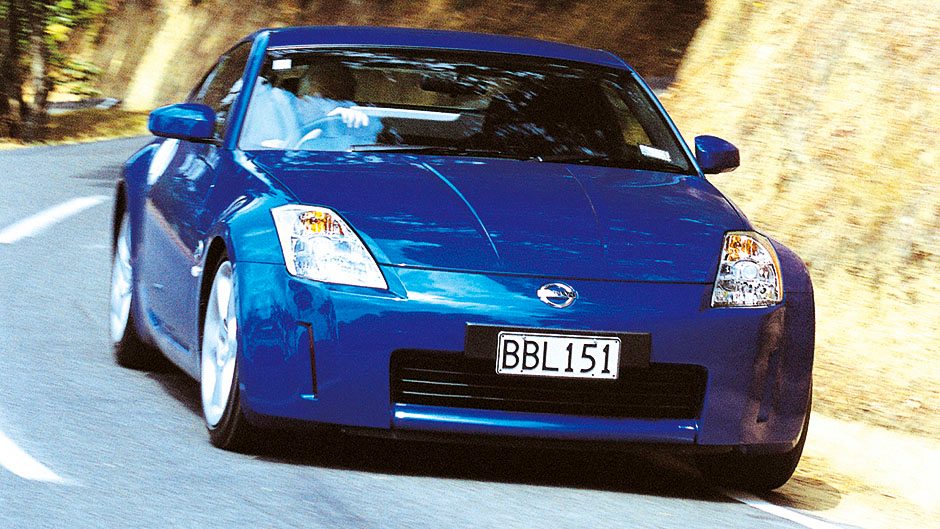
Inside, the 350Z cabin exhibits the purposeful ambience of a Porsche rather than the design-chic of an Audi TT. It’s an ergonomic model for some more expensive cars, yet the easily recognised lift in quality and trim above the plastic vomit of the 200SX is let down a little by the hole in the dashboard for the sadly absent sat-nav system enjoyed in other markets. This gets concealed by a flimsy cover in our climes, but the alloy finish of the door handles, gear-lever surround, and steering-wheel spokes still exudes enough class to bear comparison with more expensive sports-coupés. As for the audio, the seven-speaker sub-woofer-enhanced Bose system has the ability to recreate Sweetwaters. Other equipment includes full climate control, cruise and six airbags for when things go wrong.
The 350Z rates as one of the most eagerly awaited road tests at this magazine. As you can probably tell, it exceeded our lofty expectations.
| Model | 2003 Nissan 350Z | Price | $64,990 |
| Engine | 3498cc, V6, EFI, 206kW/363Nm | Drivetrain | 6-speed manual, rear-wheel drive |
| Fuel Use | XL/100km | C02 Output | Xg/km |
| 0-100km/h | Xsec | Weight | 1495kg |


